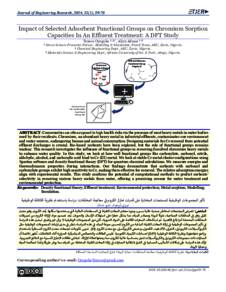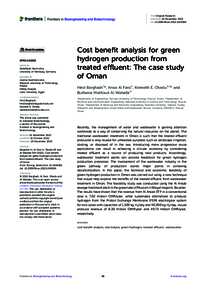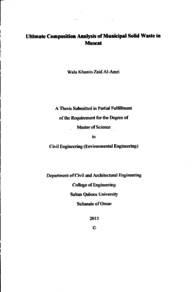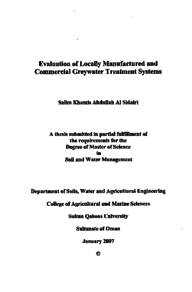Document
Impact of selected adsorbent functional groups on chromium sorption capacities in an effluent treatment: a DFT study.
Identifier
DOI:10.53540/tjer.vol.21iss1pp59-70
Source
Journal of Engineering Research, v. 21, no. 1, p. 59-70.
Contributors
Adnan, Aliyu., Author
Other titles
تأثير المجموعات الوظيفية للممتزات المختارة على قدرات امتصاص الكروم في معالجة المخلفات: دراسة باستخدام نظرية الكثافة الوظيفية.
Country
Oman
City
Muscat
Publisher
College of Engineering, Sultan Qaboos University.
Gregorian
2024-08-14
Language
English
English abstract
Communities are often exposed to high health risks via the presence of most heavy metals in water bodies used by their residents. Chromium, an abundant heavy metal in industrial effluents, contaminates our environment and water sources, endangering human and animal consumption. Designing materials for chromium removal from potential effluent discharges is crucial. This research investigates the influence of functional groups in removing dissolved chromium heavy metals to enhance water quality. In this study, we examine how functional groups like carboxylate, carbonyl, nitrile, aldehyde, alcohol, and carboxylic acid bind to Cr (III) metal. Stable chromium metal cluster configurations were analyzed using Spartan software and density functional theory (DFT) for quantum chemical calculations. Energies and thermodynamic properties were measured during interactions. Findings demonstrate that sorbents with carbonyl and carboxylate groups exhibit high sensitivity to chromium, making them effective for removal. The relative adsorption energies align with experimental results, confirming the potential of computational methods to predict sorbents' selectivity in removing various heavy metals from water, offering a promising avenue for water treatment and environmental protection.
ISSN
Online: 1726-6742
Print: 1726-6009
Arabic abstract
تتعرض المجتمعات لمخاطر صحية عالية بسبب وجود معظم المعادن الثقيلة في المسطحات المائية المستخدمة من قبل السكان. يُعد الكروم، وهو معدن ثقيل وفير في المخلفات الصناعية، ملوثًا للبيئة ومصادر المياه، مما يشكل خطرًا على استهلاك الإنسان والحيوان. تصمم هذه الدراسة مواد لإزالة الكروم من المخلفات المحتملة باستخدام الممتزات القائمة على المواد الحيوية. تم استكشاف تأثير المجموعات الوظيفية المختلفة، مثل الكربوكسيلات، الكربونيل، النتريل، الألدهيد، الكحول، وحمض الكربوكسيليك على إزالة معدن الكروم (III). باستخدام البرمجيات Spartan ونظرية الكثافة الوظيفية (DFT)، تمت دراسة تكوينات مستقرة لتجمعات معدن الكروم وخصائص الطاقة والديناميكا الحرارية أثناء التفاعلات. أظهرت النتائج أن الممتزات ذات المجموعات الوظيفية الكربوكسيلية والكربونية تظهر حساسية عالية تجاه الكروم، مما يجعلها فعالة في الإزالة. تتماشى طاقات الامتصاص النسبية مع النتائج التجريبية، مما يؤكد إمكانيات الأساليب الحسابية في التنبؤ بانتقائية الممتزات لإزالة المعادن الثقيلة المختلفة من المياه، مما يقدم مجالًا واعدًا لمعالجة المياه وحماية البيئة.
Category
Journal articles




